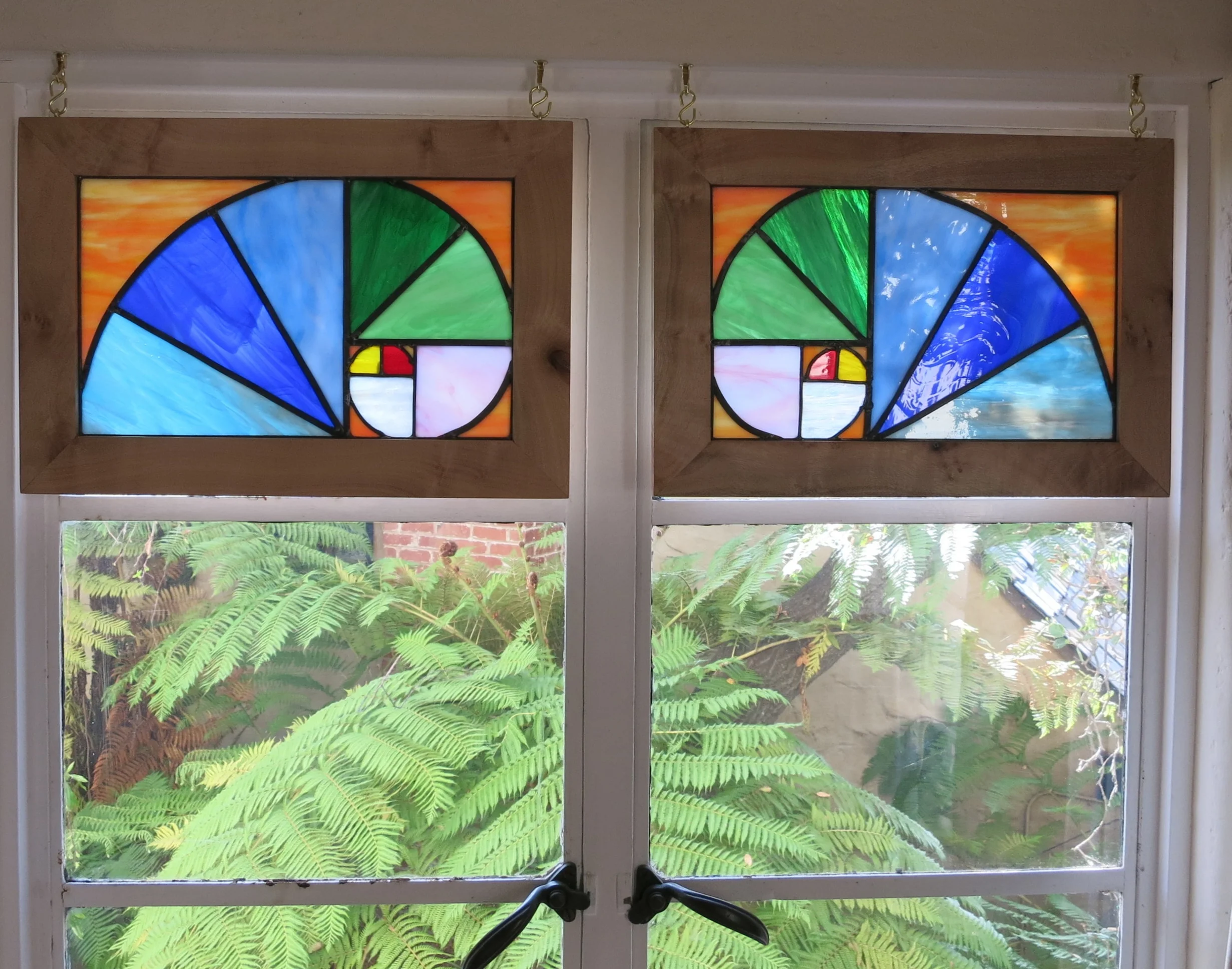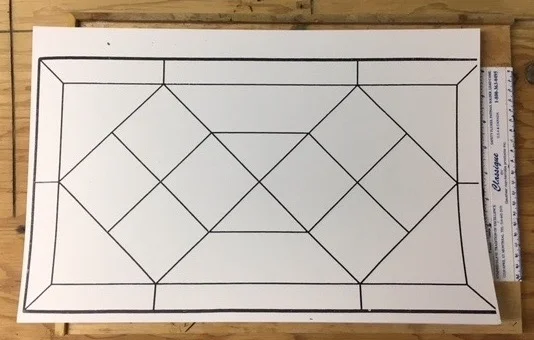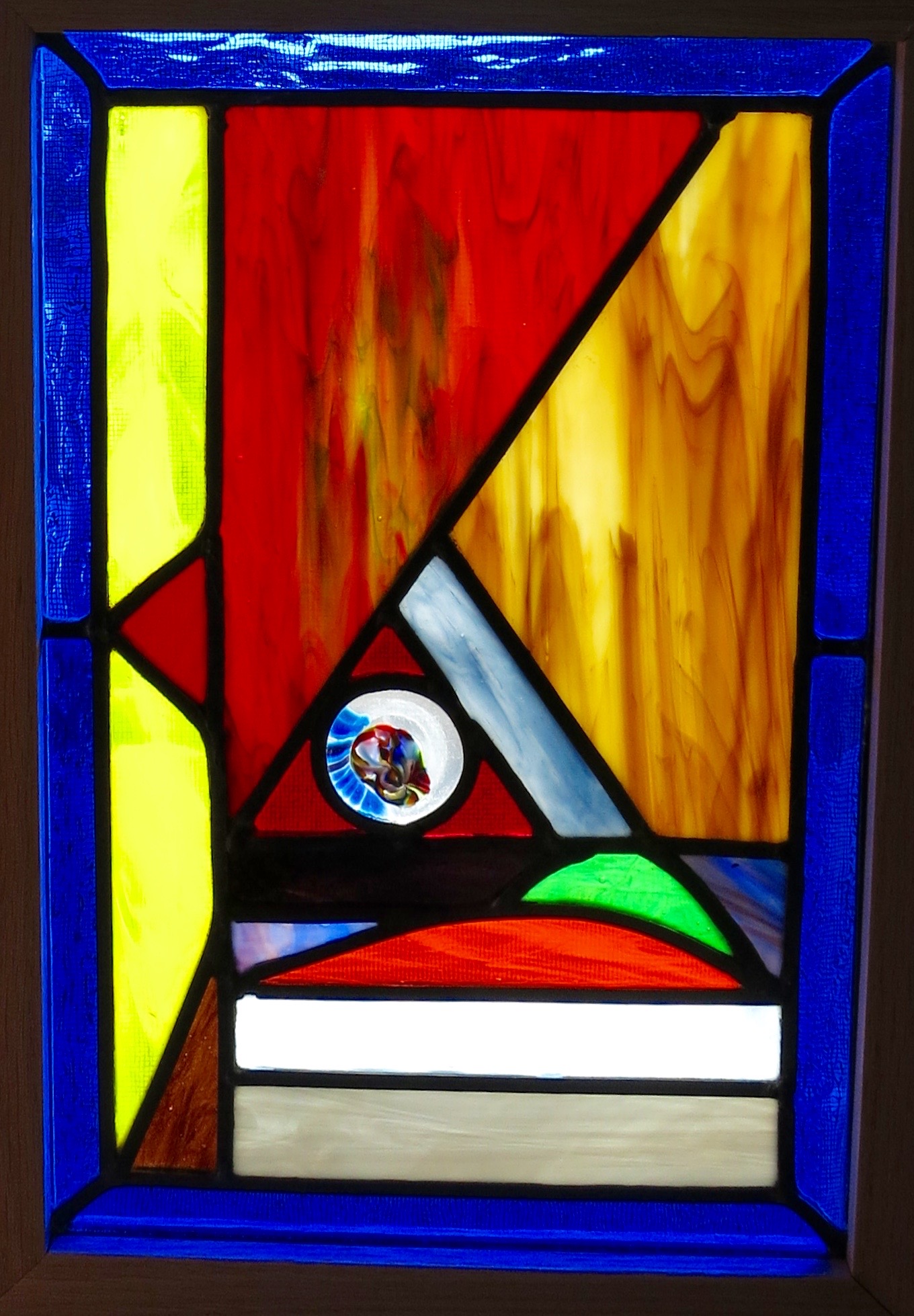Privacy Windows
A client asked for a Privacy Window for a bathroom. “I don’t want anyone to be able to see inside, but don’t make it too dark either.” I chose large amber shapes, with bevels and colored accents. The photo on the right shows the window with “outside” light bounding off the surface. The photo on the left was taken at night, inside. The center photo captures daylight entering the room, displaying traces of outdoor vegetation. It’s like two windows in one.





















